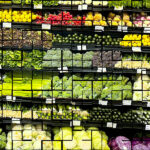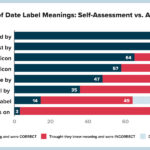A group of researchers with the Ohio State Food Waste Collaborative recently surveyed 500 people from around the country to gain insight into how eating at home during the pandemic has translated to other changes in American kitchens and if intentions to consume the food in refrigerators have risen as a result. “More than half (58%) of respondents to our July 2020 survey say they are cooking more frequently at home compared to the same time last year,” notes Brian Roe, the study’s senior author and leader of the Collaborative. “About half say that their cooking and food management levels have improved since the onset of COVID-19.”
The researchers see this as a promising trend, especially for members of the Collaborative who work on the front lines to educate the public and promote the reduction and redirection of food waste. According to the Food and Agriculture Organization of the United Nations, about one-third of the world’s food is wasted instead of eaten. About 40 percent of that food waste is generated by homes, rather than restaurants, grocery stores or farms.
The July 2020 Technical Report: “The Post-COVID State of the American Refrigerator” shows the improvement in food management most likely comes down to necessity and time. More than 40% of the 500 survey participants reported having more time available to do things (including cooking) that interest them, even after considering all changes to work, family and social obligations. Survey participants also reported a high rate of intention to eat the food in their refrigerators. Roe and his team conducted a previous refrigerator-based study in 2018 that tracked what participants expected to eat versus what they actually consumed. They found that in general, people overestimated how much food they had hoped to eat by almost half, which ends up fueling a large part of the nation’s food waste problem.
The recent survey also shows that the increase of cooking at home has translated to home food habits. “About a third of participants report fuller refrigerators and freezers versus about 10% reporting emptier refrigerators and freezers,” says co-author Kathryn Bender from Allegheny College. “This increase in cold storage was enabled in part by respondents adding appliances with more than a quarter adding a refrigerator.”













